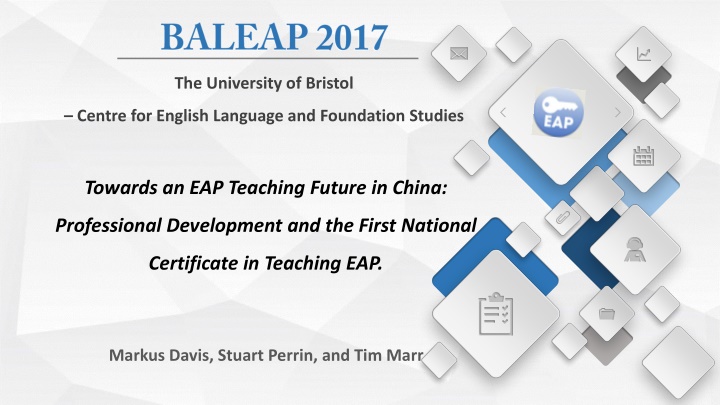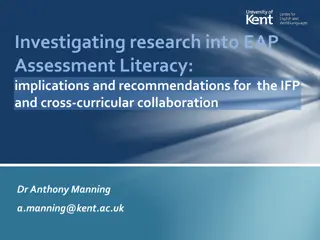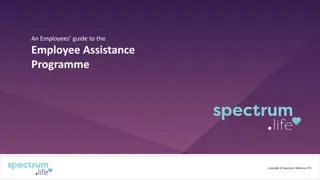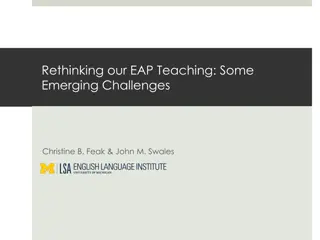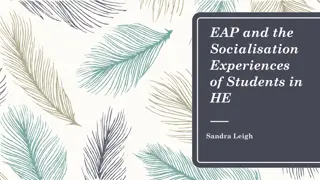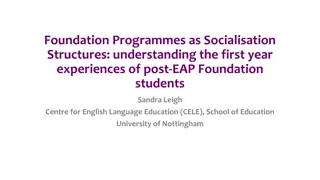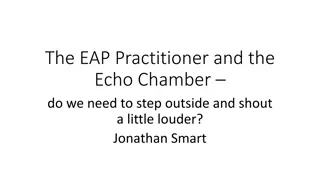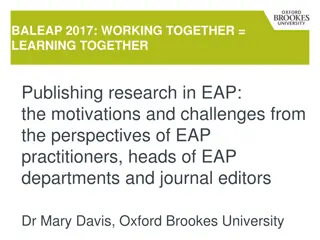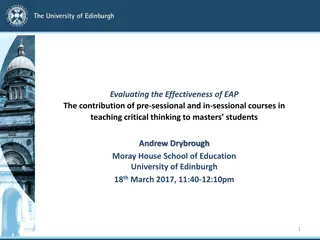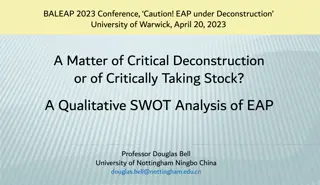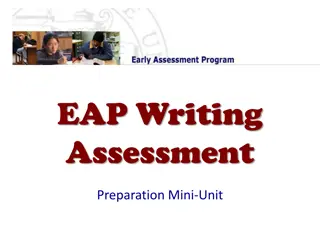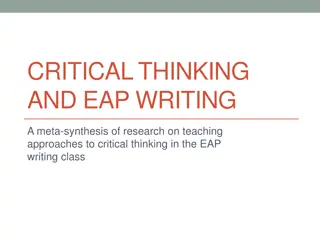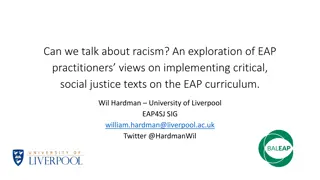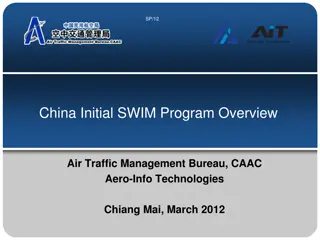Professional Development in Teaching EAP for China's Educational Future
The content delves into the impact of Transnational Education (TNE) in China, focusing on the growth of EMI delivery, re-evaluation of teaching methodologies, and the introduction of the National Certificate in Teaching EAP (NCTEAP). Key themes such as language skills, course design, and critical thinking are explored in the context of English language education in China.
Download Presentation

Please find below an Image/Link to download the presentation.
The content on the website is provided AS IS for your information and personal use only. It may not be sold, licensed, or shared on other websites without obtaining consent from the author.If you encounter any issues during the download, it is possible that the publisher has removed the file from their server.
You are allowed to download the files provided on this website for personal or commercial use, subject to the condition that they are used lawfully. All files are the property of their respective owners.
The content on the website is provided AS IS for your information and personal use only. It may not be sold, licensed, or shared on other websites without obtaining consent from the author.
E N D
Presentation Transcript
The University of Bristol < < > > Centre for English Language and Foundation Studies Towards an EAP Teaching Future in China: Professional Development and the First National Certificate in Teaching EAP. Markus Davis, Stuart Perrin, and Tim Marr
Transnational Education (TNE) a 2000s phenomena One element of the internationalisation of education. Typically (and incorrectly) associated with exporting of English speaking education and educational models. Asia and especially China has been particularly active in TNE (Huang 2007) with the British Council (2013) identifying China as a country with TNE opportunity. The 1995 Education Act of the People s Republic of China encouraged cooperation with foreign Partners. Now many partnerships and joint ventures between Chinese and UK/USA/Australian institutions. National Plan for Medium and Long Term Educational Reform and Development (MoE 2010): - achieving educational modernization - forming a learning society - transforming China into a country with competitive human resources
Impact of TNE in China Growth of EMI delivery institutions/programmes/modules Movement towards giving students real/usable language skills Questioning English language teaching in the curriculum and re-evaluation of how teaching takes place/what is taught Movement away from CET and exam-focused teaching Re-evaluation of how teaching takes place/what is taught > NCTEAP
What is NCTEAP? 8 trainers in pairs Follow-up observations Team trainin g Attendance Workshop style Duration Pass Reflective Essay (1500-2000 words) Two or three weeks Full-time Trainee-centred 1stcycle: 19 trainees
NCTEAP Threads Inform Everything English as an International Language Review & Consolidation Critical Thinking Observation & Reflection
Content Themes 02 The EAP Teacher as Language Expert Classroom Practice 03 01 Teaching the Language Skills 04 EAP Course Design and Assessment 05 Materials and Technologies
We assumed shared Terms of reference: discourse community, genre, needs, language acts, etc Definition of EAP Application of the P
Trainees Demanded ! When will you give us the EAP book? When will you tell us how to teach? When will you tell us what to teach?
Refocus: Frame of Reference Sociolinguistics Terms and Notions Practitioner Identity Was our refocus well received? My initial expectation was that this course would concentrate more on EAP teaching strategies and techniques for general EAP contexts, so there was some disappointment there.
TEAP Training should Create institutional leaders designers and developers EAP professionals o Neglect the underpinnings: ideas come first o Be a series of demonstrations of teaching activities / tasks Foster observation culture institutional collaborative culture o Just model use of a good course book o Promote pseudocontent as authentic
Further lessons Importance of getting the core concepts clear: Academic does not translate easily into Chinese: the commonest Chinese word summons up images of top experts probably in white coats, in a laboratory. Centrality of the discipline, and the way disciplinary identity is formed and expressed through language (trainees had tended to assume that there was an EAP a single one) Acknowledgement that Chinese teachers typically have very limited autonomy: institutional and cultural constraints are very strong (teachers are expected to behave like teachers ). Sensitivity to this context is appreciated
References Huang, F.T. (2007). Internationalisation of higher education in China: A focus on foreign degree- conferring programs. RIKE International Publication Series, 10, 421-432. The British Council. (2013). The shape of things to come. The evolution of transnational education: data, definitions, opportunities and impacts analysis. http://www.britishcouncil.org/sites/britishcouncil.uk2/files/the_shape_of_things_to_come_2.p df. Accessed 8 June 2016.
